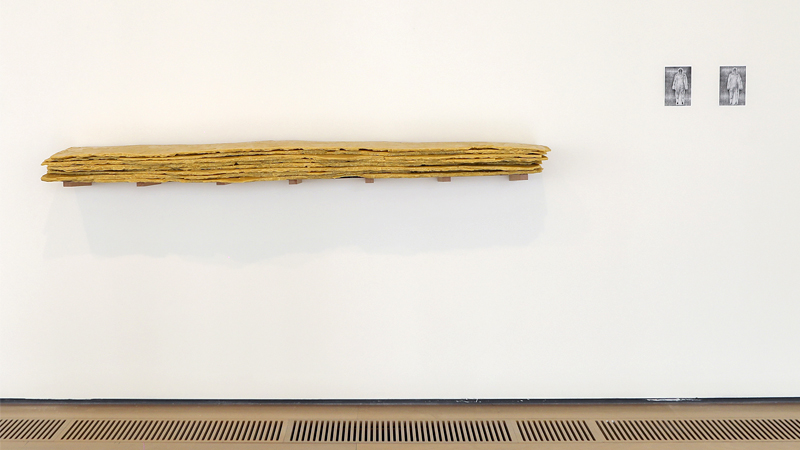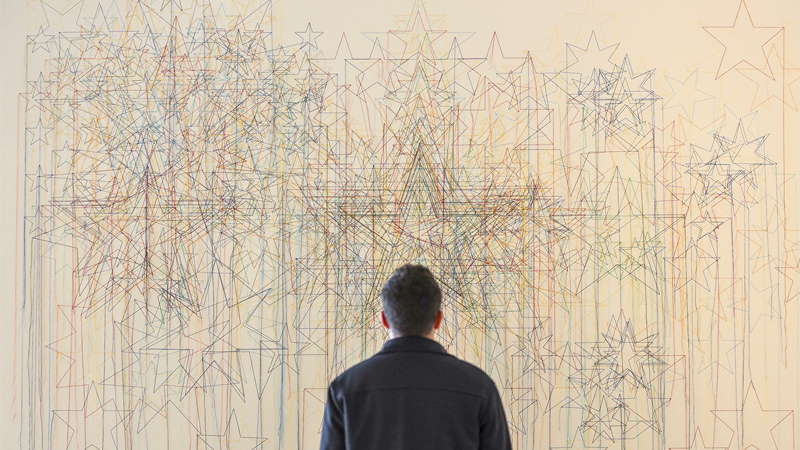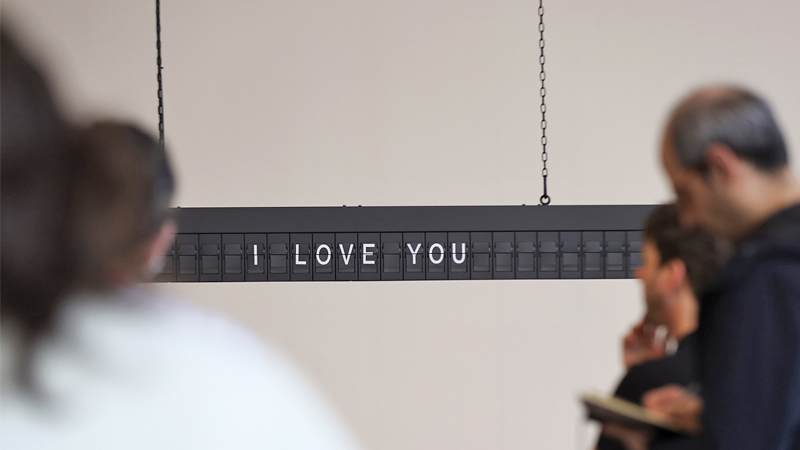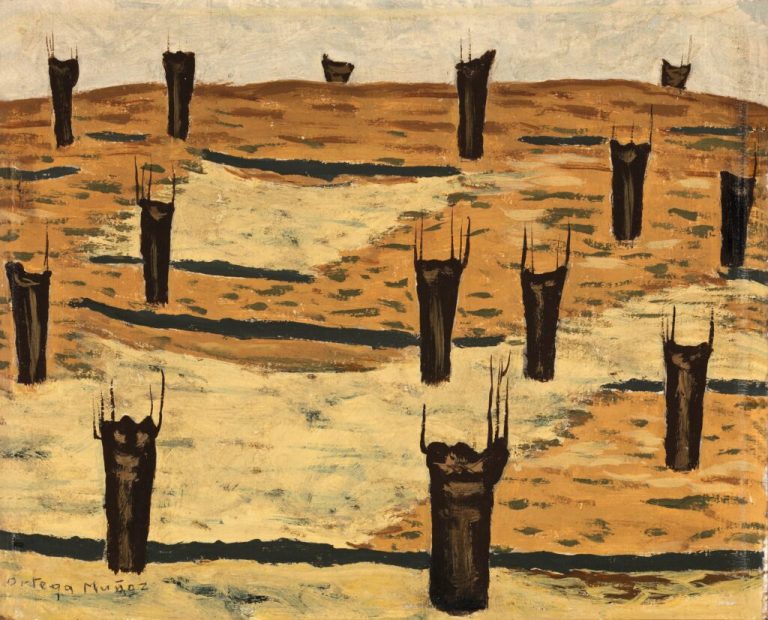Seville,
The first sample of the exhibition program at the Botín Center in Santander this year opened its doors this weekend: “I also live under your sky” presents the most recent work by the Indian artist Shilpa Gupta in dialogue with projects she has carried out in the last two decades, marked both by the desire for recognition of those who were silenced in a context that is close to them and by the desire to blur borders between people, goods and ideas; In short, it demands freedom of expression and movement.
It is worth keeping in mind, when approaching her production, which is fundamentally conceptual and lyrical, that in the area of South Asia where this artist grew up, the social and territorial disputes in relation to those borders have been constant, and that they have affected profound way to the daily lives and basic rights of the civilian population; Gupta has tried, time and again, to question these barriers and, in the space of freedom that constitutes his work, to blur or dissolve them, to cross them, both those that have to do with physical limits and the ideological ones, the intangible ones. . Along the same lines, the use of her in her voice proposals in different languages refers to the very different communities, with their own languages and beliefs, that inhabit Mumbai, the city where she was born; They will be unknown to the majority of the Western public, but the purpose of this author is that, through her poetic aspect, they can penetrate her unconscious.
Interested in these consequences of censorship and isolation in the most human and practical sphere, Gupta uses precisely the word – the written, the spoken or the sung – as a great expressive instrument. The piece that gives title to this exhibition, I Live Under Your Sky Toohas been developing it for twenty years: it is an installation of LED lights in which that phrase is repeatedly projected in English, Spanish and Urdu, demanding the effective presence of those to whom we usually do not pay attention.
The center of the route is occupied, however, Listening Air (2019-2024), a shared listening space that Gupta has produced specifically for this occasion and which consists of various suspended microphones that move, releasing the voices of various oppressed communities throughout history, making words that They could be heard in distant landscapes and at different times: in rice fields, forests, streets or universities in different parts of the world. We can hear the Bella Ciao which was first sung by the women rice workers of the Po Valley in the 1940s and, just a few years ago, by farmers protesting their working conditions in New Delhi; We Shall Overcomea popular and working-class song that has traveled from South Carolina to Tiananmen Square in Beijing, passing through different tobacco plantations; Hum Dekhenge, a work by Pakistani poet Faiz Ahmed Faiz that was recently sung on university campuses in India during recent political unrest; either They will not move us, which does not need many introductions: its origin is a spiritual song of the enslaved Africans of the southern United States, but it was also sung, among many others, by those who were protesting the coup d'état in Chile fifty years ago. Spectators will be able to join in the choreography of the installation, reacting in their own way to those recorded voices.

Another recent installation by Gupta at the Botín Center is made up of a set of drawings in which we will see outlines of different bodies drawn along with the voids left by others, whose absence is thus highlighted. They correspond to poets who in very different countries (from Italy to Nigeria, passing through Russia, Turkey, China, Azerbaijan, Pakistan or Myanmar) were imprisoned precisely for their words; Accentuating the metaphorical nature of the set, these drawings have been framed in wooden cages along with verses by these authors.
This work is part of a broad research project on poetry and repression, with international projection, from which a set of pieces made with everyday materials has also arrived here: we are referring to glass bottles from a pharmacy apothecary whose labels contain verses of censored poets and, within, the invisible breath of these same verses whispered by the artist (Untitled, Spoken Poem in a Bottle); to a tower of 21 pencil points on a wooden pedestal, which seems about to collapse due to its fragility and which points to the poet's persistence in his work despite threats (tower of broken pencils); or a small portion of a wedge-shaped clock, cast in ammunition bronze, which alludes to the material time allowed in prisons for visits from the outside (Visiting hours).

Along with words, another of Gupta's instruments when referring to the silenced and absent is the body, which usually appears fragile and divided in his works. Untitled, Distance between two tears (2021) consists of an aluminum bar that marks the distance between the author's pupils; A liquid, the mouth freezes (2018) is another bronze sculpture of cast ammunition, now in the form of the negative of the cavity of an open mouth, for all those who had to close it; and in the same material he cast black foot tights, of different heights, with which he alludes to the possibility of climbing on them to glimpse unknown horizons. We will also see wax sheets of different shapes belonging to his series Mold of a body (2023): they were created from the artist's body, which became a negative body that is offered here flattened, sectioned and stacked.
Another piece conceived for this exhibition at the Botín Center is 100 hand drawn maps of Spain (2024): had the collaboration of a hundred people in several cities in our country to trace the outline of our borders by eye on the pages of a book; Its leaves have then been agitated by a fan, influencing the occasionally artificial nature of these barriers. From that perspective we can also understand Stars on Flags of the World (2024), a textile embroidered with the stars of all the nations of the world, recognized or not, overlapping when extracted from their original banners.

It also stands out in “I also live under your sky”, They still don't know what I dream (2021), an analog screen similar to those in transport stations in which short phrases written by Gupta are rhythmically generated, not always coherent, sometimes of a personal nature and other times of a social nature, fragmented or intertwined: we can interpret them as emotional expressions, this time free, about which the visitor can formulate infinite conjectures, never certainties.
The exhibition has been curated by Bárbara Rodríguez Muñoz, director of exhibitions at the Centro Botín, and this presentation has been accompanied by the celebration, just a couple of weeks ago, of the last Art Workshop of her Foundation by this Indian creator: The Ground Slips Between Us.

Shilpa Gupta. “I also live under your sky”
LOOT CENTER
Albareda Dock s/n
Pereda Gardens
Santander
From March 23 to September 8, 2024






